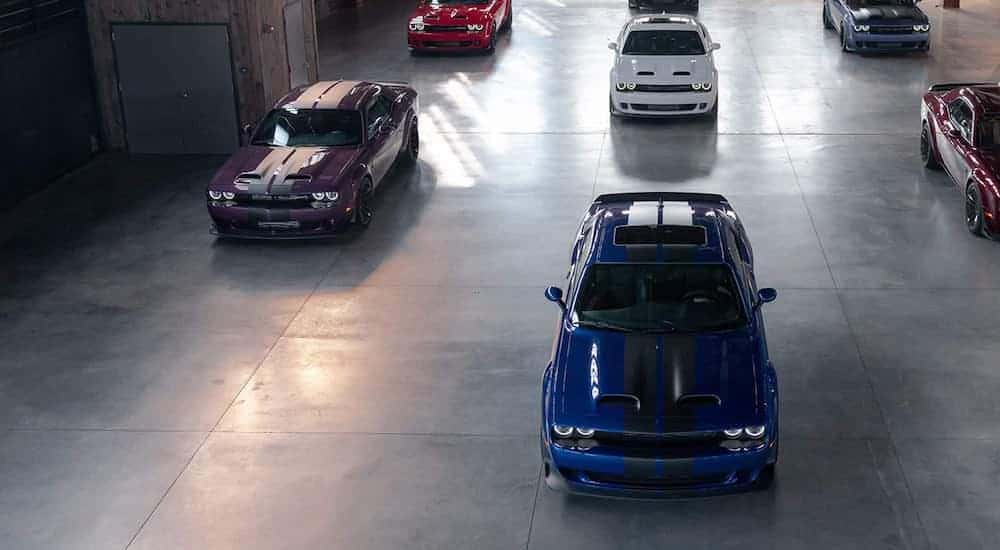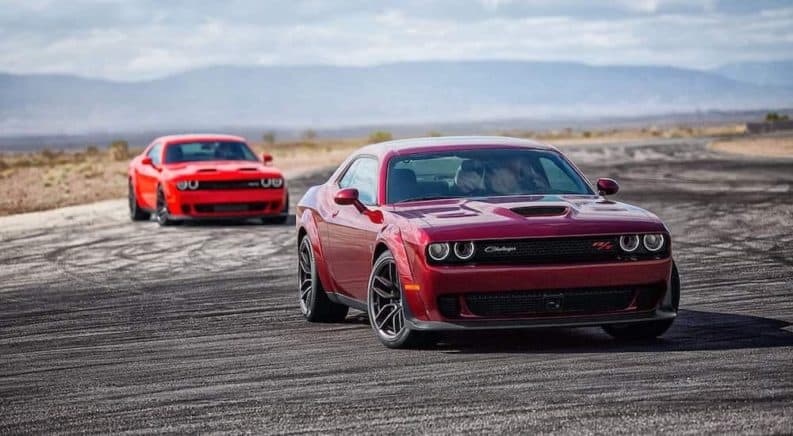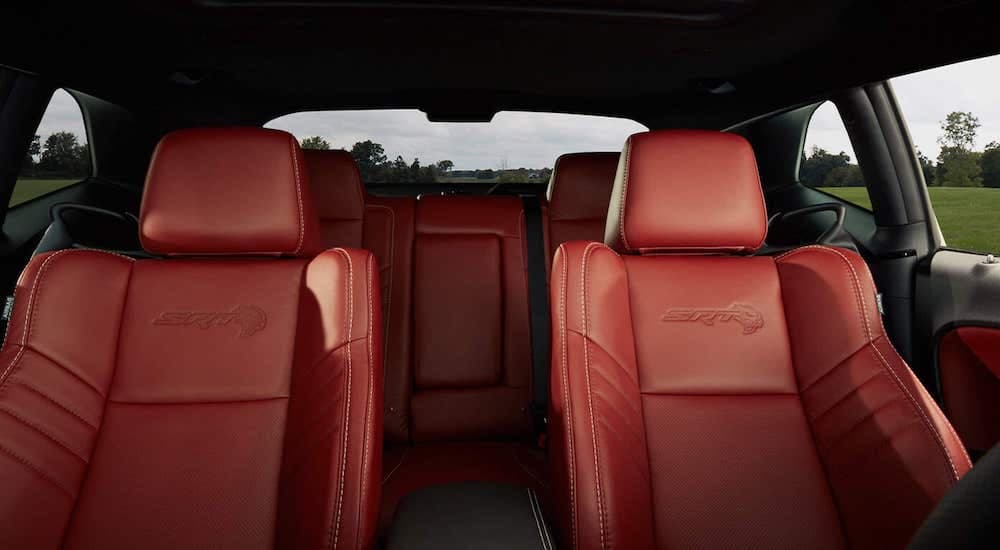Muscle cars seem to be far and few between these days. It feels like we don’t have a smorgasbord of competing brands and variations of popular models trying to outdo one another in horsepower and raw speed like we did in past eras. The reason for that may have to do with clean air legislation and a boatload of prohibitive measures related to carbon emissions. Even still, muscle cars just aren’t sought after as a benchmark of progress by many automakers; nowadays, it’s all about the supercars, electric cars, and the hybrids… Except for Dodge. The 2021 Dodge Challenger is one of those vehicles that continues to defy the standards.
The Stellantis company, formerly Fiat Chrysler Automobiles, isn’t content with just being another producer of mid-tier marques. Dodge is intent on pushing the boundaries and retaining some of the lifeblood and ingenuity that made the Charger and Challenger so iconic so many decades ago. We see that innervating glisten within the design philosophy of each new model year from Dodge vehicles, the Challenger in particular. The trims for the 2021 model year, for instance, are highlighted with some fairly awesome features that are quite exciting, all of which fit within Dodge’s mantra of bringing the muscle back to production street vehicles.
2021 Dodge Challenger Has Eight Trims
The 2021 Dodge Challenger comes in eight different trim formats with two different drivetrain configurations, either rear-wheel drive or all-wheel drive. The eight trims include the Challenger SXT, GT, R/T, the Challenger R/T Scat Pack, SRT Hellcat, SRT Hellcat Redeye, and the Challenger SRT Super Stock. The
The different trims change what sort of packages are made available for customers, as well as what comes standard with the car. Each trim also has vastly different fuel economy ratings, which may affect how you look at the vehicle’s long-term financial aspect and whether you will want to invest in a specific trim at the expense of more economical gas mileage.
In short, the first two trims, the SXT and GT, are equipped with a 303 horsepower V6 engine. I know, it’s not the most robust display of under-the-hood prowess for a Challenger, but what it lacks in oomph it more than makes up for it with the fuel economy. The SXT and GT’s rear-wheel drive configurations afford drivers up to 19 MPG in the city and a very impressive 30 MPG on the highway.
This is in opposition to the higher trims available for the Dodge Challenger, such as the R/T Scat Pack edition and the SRT Hellcat, which drop all the way down to 14 MPG in the city and 23 MPG on the highway for the R/T Scat Pack, and 13 MPG in the city and 21 MPG on the highway for the SRT Hellcat.
However, you get a heck of a lot more bang for your buck with the upper-end trims compared to the lower end offerings. So the trade-off is going to be based on what you want out of the Challenger and how much fuel economy you’re willing to sacrifice for performance gains.

Challenger R/T and R/T Scat Pack for Mid-Tier Power
Above the lower trims are the Challenger R/T and R/T Scat Pack. These two trims are available in multiple configurations and with various powertrains. They feature an alternate body design from the SXT and GT, including a performance hood for better aerodynamics and airflow, as well as improved performance steering and a reinforced suspension. They also swap out the base V6 engine for a Hemi V8, with the base Challenger R/T offering 375 horsepower and up to 410 lb-ft of torque.
Above that, you have the Challenger R/T Scat Pack and the R/T Scat Pack Widebody editions, which can generate up to 485 horsepower and 475 lb-ft of torque. The Scat Pack comes with Bilstein high-performance shocks and Brembo multi-piston performance brakes for all four wheels.
Another big difference between the R/T and the R/T Scat Pack is the former comes with an optional manual or automatic transmission, whereas the R/T Scat Pack is only available with six-speed manual transmission for peak performance.
SRT Hellcat and Redeye Puts the Muscle Back in Muscle Cars
True to their maxim of focusing on aggressive designs, menacing fascias, and the concept of metal machines built to flex their muscle on the road, the Dodge Challenger SRT Hellcat is the archetype of Dodge’s invigorating embodiment of the old muscle car era fine-tuned for today’s generation of drivers. Even the name itself stands out with menace… The Hellcat.
The base SRT Hellcat (and yes, there are levels to this thing) is fitted with a 6.2-liter Hemi V8 engine that produces 717 horsepower and 656 lb-ft of torque. The SRT Hellcat boasts an impressive top speed of 199 MPH, but that’s not the most powerful version of the Challenger.
The SRT Hellcat Redeye goes a step beyond with a Hemi high output SRT V8 engine that produces 797 horsepower and 707 lb-ft of torque. It also comes with a dual-snorkel hood for cold air intake to help cool the engine, allowing it to hit 0 to 60 in just 3.4 seconds. This thing is absolutely insane.
Yet, it’s not even the most powerful version of the 2021 Dodge Challenger. Yes, the Challenger’s true form pushes the boundaries even further.
Maximum Production Performance With the SRT Super Stock
The SRT Hellcat and SRT Hellcat Redeye seem too good to be true, but they’re not even the Challenger’s topmost incarnation. That glorious honor would go to the SRT Super Stock.
If you thought the SRT Hellcat was impressive, the SRT Super Stock takes things a step further, with a supercharged 6.2-liter Hemi high output SRT V8 engine that is clocked at 807 horsepower and 707 lb-ft of torque. This thing is basically generating the sort of muscle you would find in a heavy-duty pickup truck… Except it’s not a pickup truck!
The SRT Super Stock is so powerful it comes standard with Nitro NT05R drag radials. It’s seated on a rear axle with a 3.09:1 ratio for maximum use of torque in a production car and is rated as one of the fastest muscle cars that’s street legal.
This beast on wheels is capable of hitting 0 to 6 in just 3.25 seconds, which is three-quarters of a second faster than the SRT Hellcat Redeye and can finish a quarter-mile in just under 10.5 seconds at 131 miles per hour.
You’re not dealing with a typical muscle car with the SRT Super Stock; you’re essentially taming a demon on wheels with a shift stick and a dashboard.
Monster Choices
One thing you really have to tip your hat off to Dodge for is giving car shoppers a lot of options and a lot of choices when it comes to the 2021 Dodge Challenger. There are about 15 different model variations to choose from, and that’s not even including all of the package configurations available.
The highlight of the Challenger’s trim options is that they range in price and capability based on what you want out of a muscle car. It goes without saying, though, that the Challenger is every bit the muscle car that you could ask for, especially anything above the GT trim.





